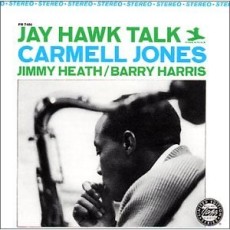
Daily Dose Of Jazz…
Carmell Jones was born in Kansas City, Kansas on July 19, 1936 and was reared by parents how were both teachers. He became interested in music and jazz, by his own admission, at the age of two. Piano lessons began at age five, gave way to the “that’s for sissy’s attitude” and trumpet started at seven.
He spent two years in the army followed by two years at the University of Kansas as a music education and trumpet major. Leaving the Midwest for the Pacific coast, he became a California studio musician in 1960 recording with such artists as Sammy Davis Jr., Bob Hope, and Nelson Riddle. During this chapter in his success story, he was being compared to Clifford Brown and Fats Navarro. Carmell developed a close association with Bud Shank as a member of his quintet. He recorded with many other notables and most importantly he recorded his first album under his own name and contract with Pacific Jazz – “The Remarkable Carmell Jones”.
In ‘64 moving to New York he joined the Horace Silver Quintet recording three albums with Silver including “Song For My Father”. Down Beat Magazine awarded Jones the designation of “New Star Trumpeter” and signing with Prestige, he recorded what he considers his most successful personal album, “Jay Hawk Talk”, with pianist Barry Harris, tenor Jimmy Heath, drummer Roger Humphreys and bassist Teddy Smith. This album received the critics 5 Star Best Album Award.
The next year Carmell left the U.S. for Germany and spent the next fifteen years working with Milo Pavlovic, Herb Geller, Leo Wright and Eugene Cicero, the SFB Big Band and Radio Free Berlin recording 8 hours a day, composing and arranging for radio, TV and film. Upon his return to the States he devoted much of his time building new musicians from the ground up teaching music in his hometown elementary schools.
Carmell Jones, trumpeter, composer, arranger, music publisher, educator and recording artist with over sixty albums to his credit passed away in Kansas City, Kansas on November 7, 1996.
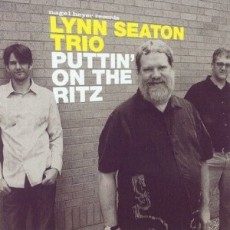
Daily Dose Of Jazz…
Lynn Seaton was born on July 18, 1957 in Tulsa, Oklahoma and began studying classical guitar vey young but by age nine switched to the bass. By the late 70s he was performing around the state and in 19080 he moved to Ohio with the Steve Schmidt Trio and later became the house bassist at the Blue Wisp Jazz Club in Cincinnati. This gig gave him the opportunity to accompany a host of big name jazz guest soloists every week.
Seaton joined Woody Herman in 1984 followed by the Count Basie Orchestra in ’85 and after two years began touring extensively with Tony Bennett and George Shearing. He went on to spend time touring with Monty Alexander and with the Jeff Hamilton Trio. Since the early ‘90s the bebop and swing bassist has free-lanced with the likes of Toshiko Akiyoshi, Ernestine Anderson, Buck Clayton, Al Cohn, Kenny Drew Jr., Scott Hamilton, Ken Peplowski, Wynard Harper, Frank Foster, Harry “Sweets” Edison, Mark Murphy, Joe Williams, Nancy Wilson, Mel Torme, Frank Wess and Blossom Dearie, just to name a few.
Rarely a leader, Lynn has recorded under his name as in 1991with “Bassman’s Basement” followed by “Solo Flights” and “Puttin’ On The Ritz” and as a sideman on over 100 recordings including Grammy-winning “Dianne Schuur and the Count Basie Orchestra”. He lived in New York from 1986 to 1998 and has performed at festivals worldwide such as Newport, North Sea, Kyoto and others. He currently teaches at the University of North Texas, home to one of the world’s largest jazz program.
More Posts: bass
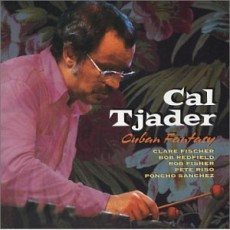
Daily Dose Of Jazz…
Callen Radcliffe Tjader, Jr. a.k.a. Cal Tjader was born July 16, 1925 in St. Louis, Missouri to touring Swedish-American vaudevillians, a tap dancing father and pianist mother. At two, his parents settled in San Mateo, California, opened a dance studio where he received piano and tap instruction from his parents. Tapping alongside his father in the Bay area he landed a role in the film “The White of the Dark Cloud of Joy” tapping with Bill “Bojangles” Robinson.
Playing in a Dixieland band around the Bay area, at sixteen Cal entered and won a Gene Krupa solo contest but the win was dampened by Pearl Harbor. After serving in the Army, he enrolled at San Jose State College and under the G.I. Bill majoring in education. He later transferred to San Francisco State College, took timpani lessons, met Dave Brubeck who introduced him to Paul Desmond. The three formed the Dave Brubeck Octet with Tjader on drums and recorded one album.
Disbanding the octet, Tjader and Brubeck formed a trio that became a fixture in the San Francisco jazz scene. During this period he taught himself the vibraphone, alternating between it and the drums depending on the song. A diving accident in 1951 forced Brubeck’s trio to dissolve, however, Tjader continued trio work with bassist Jack Weeks and pianists John Marabuto or Vince Guaraldi, recording his first 10″ LP as a leader with them for Fantasy. He went on to work with George Shearing and continued recording for Fantasy.
After a gig at the Blackhawk Cal quit Shearing and in 1954 formed The Cal Tjader Modern Mambo Quintet that produced Mambo with Tjader. The Mambo craze reached its peak in the late 1950s, and his band opened the second Monterey Jazz Festival in 1959. The Sixties was his most prolific period and his biggest success was the 1964 album Soul Sauce, the title track, a Dizzy Gillespie composition.
The 70s were lean years suffering like most jazz artists due to rock and roll’s explosive growth. During his later years he cut what most consider his seminal work “Onda Va Bien”, roughly translated as The Good Life, earning him a Grammy for Best Latin Recording.
Just as he was born on tour, he died touring on the road with his band in Manila, succumbing from a heart attack on May 5, 1982. Cal Tjader, who 40 year career playing vibraphone, drums, bongos, congas, timpani and piano stands alongside Lionel Hampton and Milt Jackson as a vital influence and is linked with swinging freely between jazz and Latin music.
More Posts: percussion,piano,vibraphone
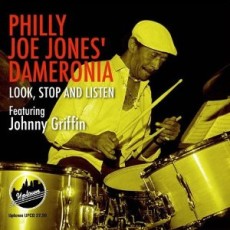
Daily Dose Of Jazz…
Joseph Rudolph Jones was born on July 15, 1923 in Philadelphia Pennsylvania. The name “Philly Joe” was used to avoid confusion with Jo Jones, the drummer from the Count Basie Orchestra, who became known as “Papa Jo Jones”. In 1947 he became the house drummer at New York’s Café Society, playing with the leading bebop players of the day. His most important influence among them was Tadd Dameron.
Jones toured and recorded with Miles Davis Quintet from 1955 to 1958 — a band that became known as “The Quintet”. Miles also acknowledged that Jones was his favorite drummer (in fact, in his autobiography, Davis admitted to asking other drummers to play that “Philly Joe lick”, with mixed results). He organized the Davis Quintet in 1955 so that he and Davis would not have difficulties finding competent local musicians to play with them.
From 1958 onwards he worked as a leader, but continued to work as a sideman with other musicians, including Bill Evans and Hank Mobley. Evans also openly admitted that Philly Joe was his all-time favorite drummer. For two years (1967-69) he taught at a specially organized school in Hampstead, London but was prevented from otherwise working in the UK by the Musicians’ Union. From 1981 he helped to found the group Dameronia, dedicated to the music of the composer Tadd Dameron, and led it until his death on August 30, 1985.
More Posts: drums
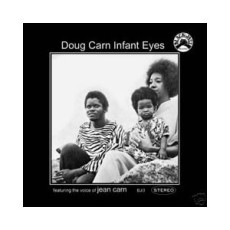
Daily Dose Of Jazz…
Doug Carn was born on July 14, 1948 in New York City but was raised in St. Augustine, Florida, where his mother, Gwendolyn Seniors Carn, taught music in the St. Johns County Public School System. Her unique and special teaching abilities provided a fertile ground for his future development, and he started piano lessons at the age of five but switched to the alto sax at eight.
Doug was introduced to all of the jazz of the late Forties and early Fifties by his a jazz aficionado and deejay uncle, Bill Seniors. By his early teens, Doug had formed his first group, The NuTones, that played a variety of jazz, R&B and Rock ‘n Roll hits for dances, proms and club dates all over Florida and southeast Georgia. In addition, he held down a post as organist for the A.M.E. church in its 11th Episcopal District.
During his sophomore year in high school, Doug started to play the oboe that would eventually earn him a full scholarship to Jacksonville University. Graduating valedictorian of his high school class, Carn turned down a full scholarship to the U.S. Air Force Academy to pursue his music.
After college Carn settled in Los Angeles where his creative writing abilities and spiritual ideology began to bear fruit. He was leading an organ trio and studying with Larry Young, Jr. when the word started to get around about Doug’s multi-faceted talents. He was soon discovered by Gene Russell who had heard about Doug’s innovative lyric adaptation of contemporary jazz classic, i.e., Wayne Shorter’s “Infant Eyes” Coltrane’s “A Love Supreme,” Bobby Hutcherson’s “Little B’s Poem” and Horace Silver’s “Peace.”
He garnered critical acclaim as a “jazz spatialist” for his “deft orchestrations” and horn arrangements. They were inspired by a natural ability to speak the be-bop language and a solid foundation in the classical tradition. He produced several landmark albums on the Black Jazz label such as “Adam’s Apple” and with his wife Jean “Infant Eyes” and “Search for a New Land”. He has worked with many great jazz musicians over the years, a list to numerous to name but included Lou Donaldson, Stanley Turrentine and Irene Reid and continues to record, perform and tour.
More Posts: piano

